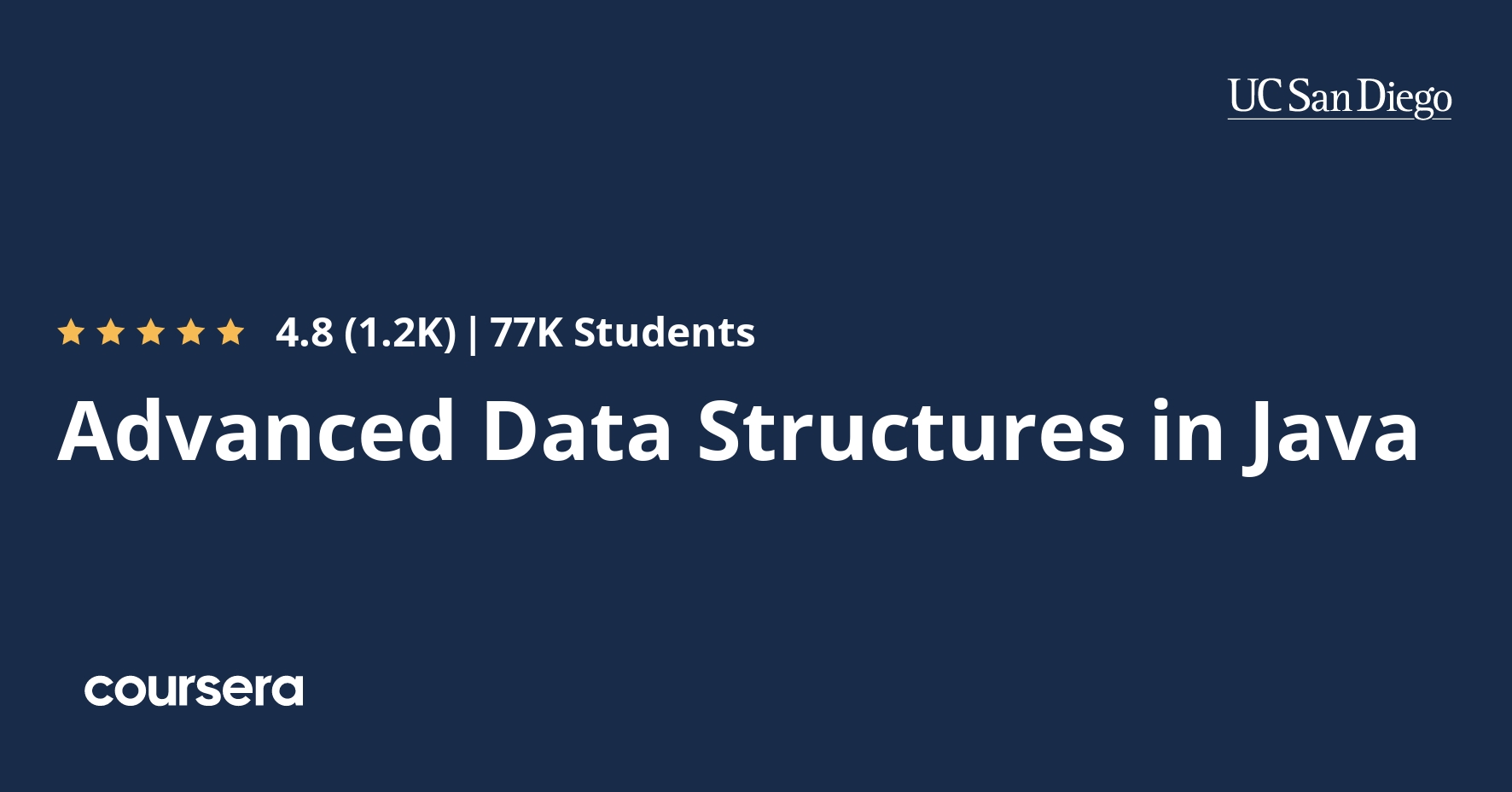Description
How does Google Maps plan the best route for getting around town given current traffic conditions? How does an internet router forward packets of network traffic to minimize delay? How does an aid group allocate resources to its affiliated local partners?
To solve such problems, we first represent the key pieces of data in a complex data structure. In this course, you’ll learn about data structures, like graphs, that are fundamental for working with structured real world data. You will develop, implement, and analyze algorithms for working with this data to solve real world problems. In addition, as the programs you develop in this course become more complex, we’ll examine what makes for good code and class hierarchy design so that you can not only write correct code, but also share it with other people and maintain it in the future.
The backbone project in this course will be a route planning application. You will apply the concepts from each Module directly to building an application that allows an autonomous agent (or a human driver!) to navigate its environment. And as usual we have our different video series to help tie the content back to its importance in the real world and to provide tiered levels of support to meet your personal needs.
What you will learn
Introduction to the Course
Welcome to the first week in the third course of our Intermediate Java Programming Specialization. Once again start with introductions, and in particular introduce the unique structure of this course. Also, if you’re not sure if this course is right for you, we’ve got an optional pre-course quiz coming right up that can help you figure out if you’re in the right place. If you decide to stay with us (and we really hope you will!) we’ve got a great backbone project for you: your very own mapping application, inspired by Google Maps! The core data structure throughout this course is graphs, which may very well be the most fundamental data structure in all of computer science. Ready to begin? So are we!
Introduction to Graphs
This week we’ll start getting technical, introducing you to the central data structure in the course: Graphs. You’ll learn the basics and then have a chance to dive in a little deeper into the code, getting ready to start building that Google Maps-like application.
Class design and simple graph search
This week you’ll get the backbone of your map search engine up and running. In previous courses, including the previous courses in this specialization, you’ve probably been given most of the classes you needed to complete the assignments. But learning how to design classes from scratch is a key skill that you will need as you become a more sophisticated Java programmer. This week we’ll give you the tools you need to create a robust and elegant class design for your map search engine. We’ll introduce a similar problem and show you how it can be represented as a graph. Then we’ll introduce two core search algorithms: depth-first search and breadth-first search. Finally, we’ll turn our graph problem into a set of Java classes. Your task on the programming assignment this week will be to do the same thing, but in the context on the map search engine!
Finding shortest paths in weighted graphs
In the past two weeks, you’ve developed a strong understanding of how to design classes to represent a graph and how to use a graph to represent a map. In this week, you’ll add a key feature of map data to our graph representation — distances — by adding weights to your edges to produce a “weighted graph”. Although this might seem like a small change, the algorithms that work for unweighted graphs may prove ineffective for weighted graphs. To address this problem, you’ll explore more advanced shortest path algorithms. First, you’ll see how to find the shortest path on a weighted graph, then you’ll see how to find it more quickly. In the project, you’ll apply these ideas to create the core of any good mapping application: finding the shortest route from one location to another.






